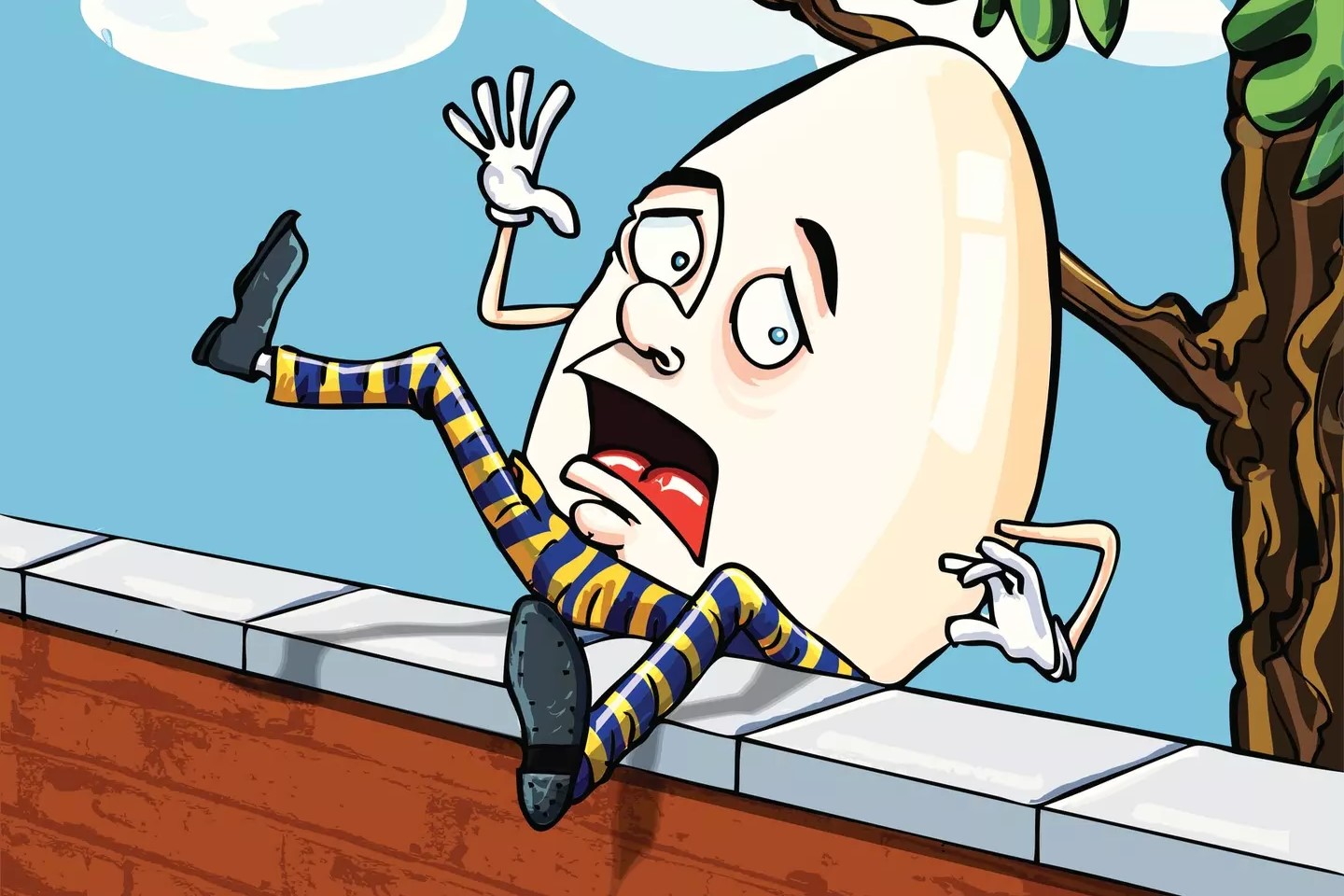
Humpty Dumpty is more than just a nursery rhyme character who had a great fall. Ever wondered about the origins and hidden meanings behind this famous figure? Humpty Dumpty has a rich history that spans centuries, with roots in English folklore and literature. Some believe he represents a cannon used during the English Civil War, while others see him as a symbol of human fragility. This egg-shaped character has inspired countless adaptations in books, movies, and even political cartoons. Ready to crack open the mystery? Here are 35 fascinating facts that will give you a whole new perspective on Humpty Dumpty.
Key Takeaways:
- Humpty Dumpty, a classic nursery rhyme character, has sparked historical theories, cultural impact, and educational value, making it a timeless and influential figure in literature and media.
- Despite its simplicity, Humpty Dumpty offers educational value for children, teaching language development, safety, resilience, and creativity, making it more than just a beloved nursery rhyme.
Humpty Dumpty: The Nursery Rhyme
Humpty Dumpty is a classic nursery rhyme known by children and adults alike. Its origins and meanings have fascinated many over the years. Here are some intriguing facts about this beloved character and rhyme.
-
Humpty Dumpty first appeared in print in 1797 in a book called "Juvenile Amusements."
-
The rhyme is often associated with an egg, although the original text never mentions Humpty Dumpty being an egg.
-
Lewis Carroll's "Through the Looking-Glass" popularized the egg imagery in 1871, where Humpty Dumpty is depicted as an egg.
-
The rhyme has four lines, making it one of the shortest nursery rhymes.
-
Humpty Dumpty is believed to be a riddle, with the answer being "an egg."
Historical Interpretations
Over time, many have tried to decode the historical context behind Humpty Dumpty. Here are some theories:
-
One theory suggests Humpty Dumpty was a cannon used during the English Civil War in 1648.
-
Another theory posits Humpty Dumpty was King Richard III, who fell from his horse during the Battle of Bosworth Field.
-
Some believe Humpty Dumpty represents a drink made from brandy boiled with ale.
-
The rhyme may also symbolize the fall of a great person or thing, unable to be restored.
-
Humpty Dumpty's wall might represent a castle wall or a metaphorical barrier.
Cultural Impact
Humpty Dumpty has left a significant mark on various aspects of culture, from literature to media.
-
Humpty Dumpty appears in many books, including works by James Joyce and Salman Rushdie.
-
The character has been featured in numerous films, cartoons, and TV shows.
-
Humpty Dumpty has inspired songs, including a track by Tori Amos.
-
The character is a popular figure in art, with many artists creating their interpretations.
-
Humpty Dumpty has been used in political cartoons, symbolizing fragile political situations.
Modern Adaptations
Humpty Dumpty continues to evolve, finding new life in modern adaptations.
-
The character appears in the "Shrek" franchise, voiced by Zach Galifianakis.
-
Humpty Dumpty is a character in the video game "Alice: Madness Returns."
-
The rhyme has been adapted into various children's books, often with a twist on the original story.
-
Humpty Dumpty has been featured in educational programs, teaching children about safety and consequences.
-
The character has even inspired merchandise, from toys to clothing.
Fun Facts
Here are some lighter, fun facts about Humpty Dumpty that might surprise you.
-
Humpty Dumpty has his own day—March 31st is National Humpty Dumpty Day.
-
The character has been parodied in many comedy shows, including "The Simpsons."
-
Humpty Dumpty has a star on the Hollywood Walk of Fame, thanks to his enduring popularity.
-
The rhyme has been translated into multiple languages, making it a global phenomenon.
-
Humpty Dumpty has been used in psychological studies, exploring themes of failure and recovery.
Educational Value
Despite its simplicity, Humpty Dumpty offers educational value for children.
-
The rhyme helps with language development, teaching rhythm and rhyme.
-
It introduces basic narrative structure, with a beginning, middle, and end.
-
Humpty Dumpty can be used to discuss safety, especially around heights and climbing.
-
The character's story can teach resilience, showing that not everything can be fixed.
-
Humpty Dumpty is often used in art projects, encouraging creativity and interpretation.
Humpty Dumpty in Literature
Humpty Dumpty's influence extends deeply into literature, often symbolizing deeper themes.
-
In "Through the Looking-Glass," Humpty Dumpty discusses semantics with Alice, exploring the meaning of words.
-
James Joyce's "Finnegans Wake" references Humpty Dumpty, symbolizing the cyclical nature of history.
-
Salman Rushdie's "The Enchantress of Florence" includes a character inspired by Humpty Dumpty.
-
Humpty Dumpty appears in "The Annotated Mother Goose," a collection of nursery rhymes with historical notes.
-
The character is used in academic texts, analyzing its cultural and psychological significance.
The Final Word on Humpty Dumpty
Humpty Dumpty isn't just a nursery rhyme character. This egg-shaped figure has a rich history and cultural significance. From its origins in a riddle to its association with a cannon during the English Civil War, Humpty Dumpty has evolved over centuries. The rhyme has inspired countless adaptations in literature, art, and media, making it a timeless piece of folklore.
Understanding the layers behind Humpty Dumpty adds depth to this seemingly simple rhyme. It's fascinating how a short verse can hold so much meaning and history. Whether you're a fan of nursery rhymes or a history buff, Humpty Dumpty offers something intriguing for everyone.
Next time you hear the rhyme, remember there's more to Humpty Dumpty than meets the eye. This classic tale continues to captivate and inspire, proving its enduring charm and significance.
Frequently Asked Questions
Was this page helpful?
Our commitment to delivering trustworthy and engaging content is at the heart of what we do. Each fact on our site is contributed by real users like you, bringing a wealth of diverse insights and information. To ensure the highest standards of accuracy and reliability, our dedicated editors meticulously review each submission. This process guarantees that the facts we share are not only fascinating but also credible. Trust in our commitment to quality and authenticity as you explore and learn with us.


